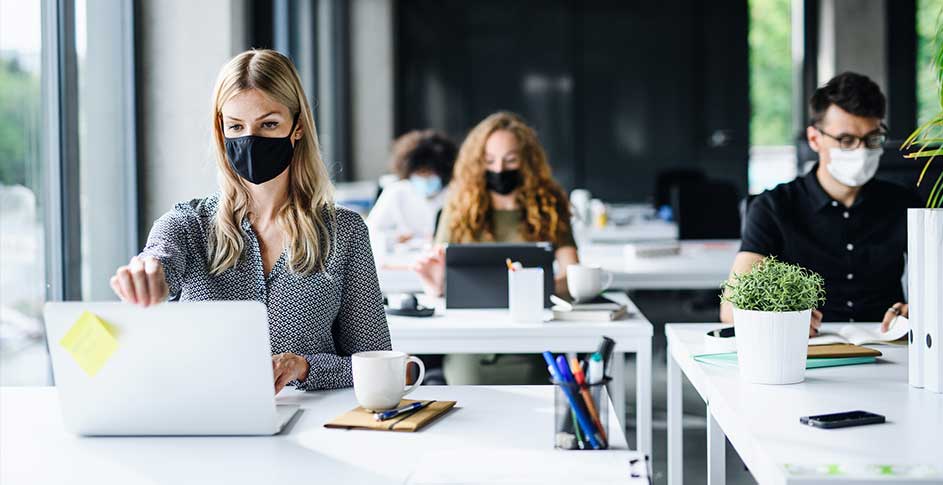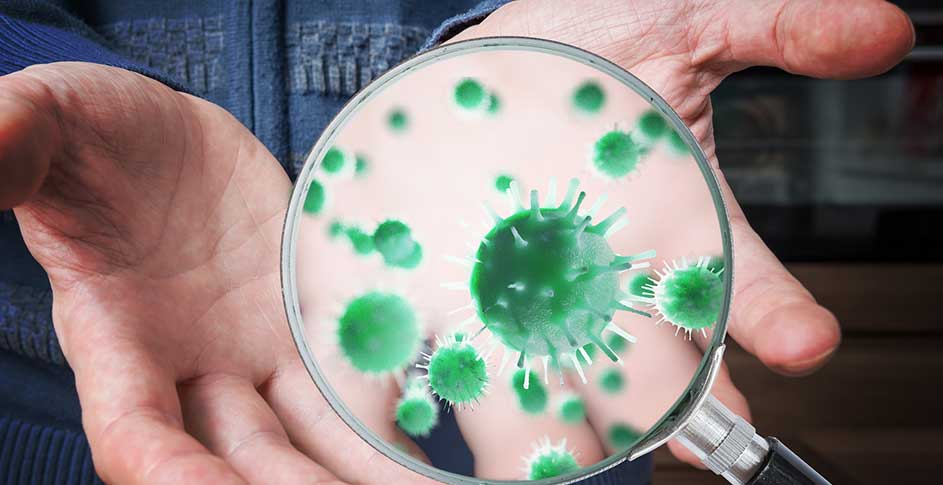Since you are reading an ActivePure blog, you already know we’re the best of the bunch. However, you shouldn’t have to take our word for it. Let’s review the top passive and proactive air purification technologies on the market so you can make your own decision. We’ll also explain what is special about ActivePure’s proprietary innovations.
Passive vs. Proactive: The Basics
Air purifiers can be sorted into 2 broad categories: passive and proactive.
Passive purifiers require that the air first pass through an internal mechanism. You might notice a problem with this though. If the air has to flow through a filter to be treated, what's to stop it from flowing into your lungs first? This is particularly important in light of what we learned from the COVID-19 pandemic. A single infected person can spread disease to the entire room before the passive purification has a chance to remove the virus. Examples of passive purifiers include HEPA filters, carbon filters, and most UVGI.
If proactive purifiers (also sometimes called active purifiers) have a philosophy, it's that the best defense is a good offense. They reduce contaminants in the air without needing to draw the air through their mechanism; in other words, they go to the contaminants rather than waiting for contaminants to come to them.
Proactive purifiers are relatively new (compared to old standards like passive HEPA) but certain types have demonstrated their bonafides in study after study. Examples of proactive purification include ion generators, photocatalytic oxidation, and ActivePure’s proprietary technology.
Note that both categories of purifiers may either be installed into the ductwork of a building, or they may take the form of a portable unit.
Some Vocab Notes
Fluid: You may be used to thinking of the term “fluid” as synonymous with “liquid.” But in science jargon, “fluid” technically means both liquids and gases, including the air we breathe.
Ion: Per Merriam-Webster, an ion is “an atom or group of atoms that carries a positive or negative electric charge as a result of having lost or gained one or more electrons.” Ions which have gained an electron are negatively charged. Ions which have lost an electron are positively charged. Each ion is attracted to particles of the opposite charge. Ionization is the process of creating ions.
Polarize: Molecules may be polarized, either naturally or because they pass through an energy field which gives them a polar charge. A dipolar molecule has a slightly negative charge at one end and a slightly positive charge at the other.
VOC (i.e., Volatile Organic Compound): a category of odiferous, carbon-based gases, some of which are harmful to human health.
Particulates (i.e., Particulate matter pollution): a combination of solid and liquid droplets consisting of everything from smoke to dust to pollen. They can be quite dangerous to human health, depending on the size.
Types of Passive Purifiers
Passive purifiers work on the principle that air must be drawn through them in order to be treated. Because of this, occupants in the room have a chance to breathe in contaminants before they pass through the filter. Passive purifiers fall into 6 general categories.
Fibrous Filter Material

This is what most folks think of when they hear the term “air purifier.” As you might expect from the name, fibrous filters push air through densely woven fibers.
The most famous fibrous filters are HEPA (High Efficiency Particulate Air) filters. HEPA filters are usually made from fiberglass strands 1/75th the size of a human hair. These fibers catch particles in 3 different ways:
- They catch large particles simply by virtue of those particulates being too big to pass between the fibers.
- They catch small particulates because Brownian motion (the natural random movement of molecules in a fluid) pushes these small particulates into the fibers, where they stick.
- They catch medium-sized particulates because the fibers form narrow, twisting pathways that are too difficult for these speeding particulates to navigate.
Of these 3 sizes, medium particulates are the most difficult for the HEPA filters to catch. For this reason, in order to be classified as a True HEPA filter, the filter must remove “at least 99.97% of dust, pollen, mold, bacteria, and any airborne particulates with a size of 0.3 microns (µm),” per the EPA.
Fibrous filters also have a MERV (Minimum Efficiency Reporting Value) rating that measures what percentage of particles they catch between 0.3 and 10 microns. The EPA recommends that home filters have a MERV rating of at least 13, if the HVAC system can accommodate it. To qualify as a HEPA filter, however, the filter must be MERV 17 or higher.
Advantages: Because ActivePure is a proactive technology, you might assume we have a negative opinion of HEPA filters. Nothing could be further from the truth. HEPA filters are effective at removing dust, pollen, and other allergens, as long as the fan pumping air through them is the correct size for the room. Thus, we put them in many of our own machines to supplement our proprietary technology. This prevents your lungs from being the filter for these particles. As a bonus, the filters also keep particles from building up on our ActivePure cells.
Disadvantages: HEPA filters don’t specifically target pathogens. While HEPA filters do catch pathogens, they do it passively — that is, the virus must first pass through the filter before it gets to you.
Viruses and bacteria may also remain active on the filter itself after being caught; (this doesn't necessarily mean they are likely to reinfect anyone, but it's still gross).
Fibrous filters do nothing at all against VOC gases. They also need to be changed regularly.
A Variation on This Method:
- There is one other form of fibrous filter that is worth mentioning — the electret filter. This filter’s fibers have an electrostatic charge (either naturally or because the fibers have been treated to give them such a charge), encouraging contaminants to stick; (think of how a balloon reacts to a sweater). This means the fibers don’t need to be woven in an electret filter, increasing airflow and decreasing the required power draw. However, they do need to be cleaned nearly once per month!
Overall rating: HEPA is great at what it does, but it shouldn’t be asked to do more. Other fibrous filters can be useful in select scenarios.
Electrostatic Precipitation (ESP)
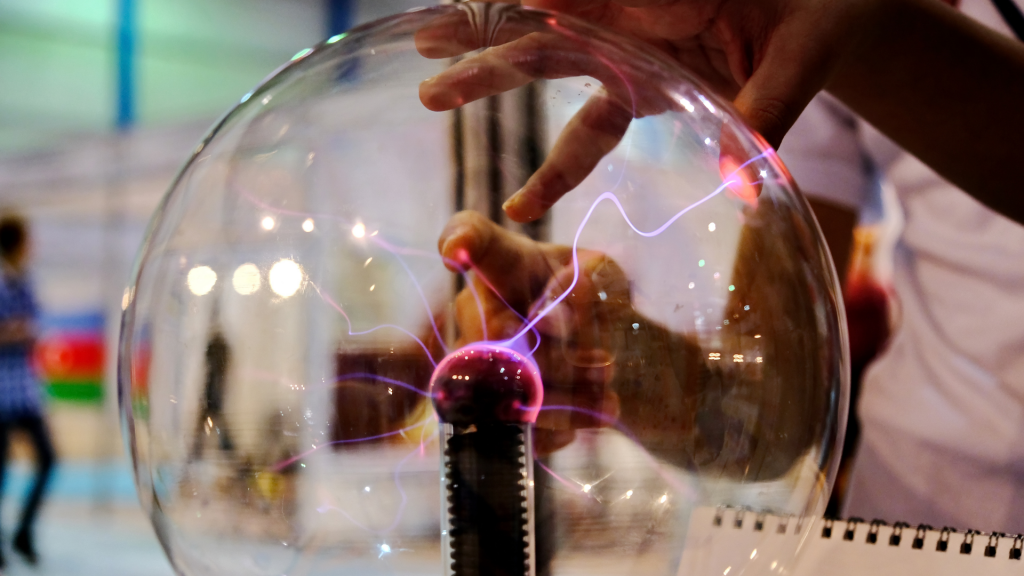
Not to be confused with the electret fibrous filter above, electrostatic precipitators run a high current through a series of electrodes (usually wires). A fan then draws air near these electrodes. When contaminants get close to the electrodes, they also acquire a charge. The air is then drawn past a series of plates with the opposite charge that attract the contaminants out of the air.
Electrostatic precipitators are principally used to filter dust and exhaust from industrial processes, but home versions also exist.
Advantages: ESPs are excellent at removing particulate matter of almost all sizes. ESPs are also used to collect microbes for certain scientific studies, but this is not their primary application as a purification system.
Because the particulates catch on plates rather than gather on a filter, the fan doesn’t have to work harder to pump the air through like it might for a highly-rated MERV filter. If an HVAC system is too old for a highly-rated MERV filter, ESP might be a cost-effective alternative to updating the entire HVAC system.
Disadvantages: The main disadvantage of ESPs is the ionization field requires a lot of power, which might negate any savings from the lower power draw of the fan. (One group of scientists recently developed an energy-efficient version using a carbon brush ionizer, but it did not successfully collect many particulates. It was, however, quite effective at removing acetic acid, acetaldehyde, and ammonia under laboratory conditions.)
Some models of ESP can generate harmful gases such as ozone and nitrous oxide. You may remember the original Ionic Breeze ESP filters from Sharper Image in the 2000s and the performance and health concerns associated with those products.
As with all passive purifiers, ESPs require air in the room to pass through their mechanism in order to be treated.
A Variation on This Method:
- Polarized media filters work on the same principle as electrostatic precipitators in that they run a constant electrical charge. However, instead of using metal plates to collect ionized contaminants, polarized media filters run an electrical charge through the filter screen itself, polarizing it to attract contaminants. This makes polarized media, mechanically speaking, similar to electret filters in the previous section. The main difference is that polarized media require live current.
Overall rating: Interesting, but HEPA is simpler if you have the fan power.
Plasma

When air is given a little electrical charge, it begins to ionize. When the air is given a LOT of electrical charge though, negative electrons and positive ions begin to flow freely in opposite directions, creating a plasma. (Fun fact, this is actually what lighting is — an electrical arc flowing freely through air that has been turned into plasma.) Plasma purifiers draw air through this electrical arc, breaking chemical bonds.
Advantages: Plasma purifiers appear to be effective at removing existing gaseous pollutants. As they do not contain physical filters, it is safe to assume they do not clog easily. (Also, it's just kind of cool to think of contaminants being zapped into oblivion by miniature lightning bolts.)
Disadvantages: Plasma purifiers are relatively new. Per the EPA’s Residential Air Cleaners: A Technical Summary, further study will be required to see how effective they are at removing particulates. They also can produce harmful byproducts such as ozone, carbon monoxide, and formaldehyde. Power efficiency is something you should vet in reviewing plasma purifiers, due to the fact that they are quite literally lighting in a box.
Overall rating: A fascinating concept, but still passive and of limited application.
Adsorbent Media

Adsorbent (not to be confused with absorbent) materials allow molecules to stick to their surfaces without swelling overmuch. An air purifier with adsorbent media are principally used to remove gases and odors.
The most common form of adsorbent media is activated carbon. You might see activated carbon (often called “activated charcoal”) promoted as a cure-all for everything from yellow teeth to cholesterol, often with little evidence to back up such claims. However, activated carbon’s use as an air and water purifier is well established.
Activated carbon is created by treating a carbon source (such as coal, coconut, or bamboo) in such a way as to create many little pores throughout the medium. These pores increase the surface area of the carbon; since adsorbent media work by letting gases stick to their surface, more surface area means more gas is adsorbed.
Advantages: Adsorbent media work well to purify the air of gas and odors, though their effectiveness varies by type and concentration of gas. ActivePure uses activated carbon in some of its devices as a supplement to its own technology, especially in units designed to address cigarette and wildfire smoke contamination.
Disadvantages: Adsorbent filters need to be changed regularly. Also, purifiers with only a small amount of carbon may be insufficient for the size of the room. Like all passive purifiers, adsorbent media requires air to pass through it for it to be treated.
The most unique disadvantage of adsorbent media is the captured gas can be rereleased into the air. This is caused by an effect called the concentration gradient driving force; if left to its own devices, any contaminant suspended in a fluid will move around until diffusion is equal. This means if there is a greater concentration of contaminants on the filter than in the air, natural forces could move these contaminants back into the air, especially during changes in temperature or humidity.
A Variation on This Method:
- There is also a type of medium used known as a chemisorbant medium. In this case, the filter is treated with a compound to chemically (rather than mechanically) bind gases to it. This removes the possibility of gases being released from the filter.
Overall rating: Great at what it does…and not great at what it doesn’t do.
Ultraviolet Germicidal Irradiation (UVGI) (Passive Methods)

Ultraviolet light (a.k.a. ultraviolet radiation a.k.a. UV) can be used as passive and proactive purification.
Ultraviolet light is the part of the electromagnetic spectrum just outside the range of human vision. UV light is classified into UVA, UVB, and UVC. UVA and UVB have longer wavelengths and are responsible for sunburn and skin aging. UVC has a shorter wavelength that is normally blocked by the ozone layer before it can reach the earth’s surface. The shorter the UV wavelength (i.e., the further it is from visible light) the better it is at damaging cells (including harmful pathogens) but the less deeply it penetrates. Most UV purifiers emit UVC light, but some make use of other wavelengths.
Passive UV purifiers work in one of 2 ways:
- The first uses a portable purifier or the existing HVAC system to pump air past UV light. This is called induct UV.
- The second method is called Upper Room UV; this method shines partially shielded UV bulbs toward the ceiling and waits for the natural air currents in the room to move air past the bulbs.
Both these methods theoretically neutralize pathogens in the air, freeing it from bacteria and viruses.
Advantages: UV air purification has been used for a century to reduce the spread of tuberculosis in crowded facilities such as hospitals, jails, and shelters. Correctly calibrated UVGI is sufficiently effective at disinfecting any nonporous and unsoiled surfaces in a professional setting (when used in conjunction with manual cleaning procedures). UVGI purification is also useful for keeping microbes from growing on cooling coils and air filters.
Disadvantages: Woof, there is a lot to cover here. In brief:
- Pathogens can be sorted into a hierarchy of how easy they are to neutralize, and UVGI's overall effectiveness reflects that hierarchy. According to the EPA's aforementioned technical summary of residential air cleaners, "If properly designed, the UVGI cleaner in a typical airstream disinfection application has the potential to reduce the viability of vegetative bacteria and molds and to provide low to moderate reductions in viruses but little, if any, reduction in bacterial and mold spores" (emphasis ours).
-
Air in an HVAC system is moving too quickly to allow the neutralization of most pathogens. According to one study, "If air velocity is too high and the dose insufficient, a microbe may have a negligible response or even recover from the damage. Insufficient data exists [sic] to determine the shoulders or threshold doses of most airborne pathogens." Induct UV can try to accommodate this uncertainty by cycling the air through multiple times, but this could take many passes. Air in an HVAC system moves 400 to 500 feet per minute. If a UV field is 2 feet long, pathogens will only be exposed for 0.3 to 0.25 seconds on each pass.
- Upper room UV does allow pathogens to be exposed for longer than induct UV, but it's still a passive system. One has to wait for the pathogens to move upward toward the ceiling before they are neutralized, leaving plenty of time for people to breathe them in first.
- If a UV bulb is not coated with the right catalyst, it can produce ozone. Ozone is wonderful in the upper atmosphere but not healthy close to the ground where humans can breathe it.
- If the UV purifier’s shield is damaged, it could expose occupants of a room to eye injury or skin damage.
- UVGI works quickly with more powerful bulbs, but more powerful bulbs increase energy costs. These bulbs also need to be regularly replaced.
- UVGI does nothing against dust, particulate matter, or harmful gases.
Overall rating: If you are worried about tuberculosis spreading in a homeless shelter, UVGI might be a good idea. Otherwise, there are better methods.
Thermodynamic Sterilization (TSS)
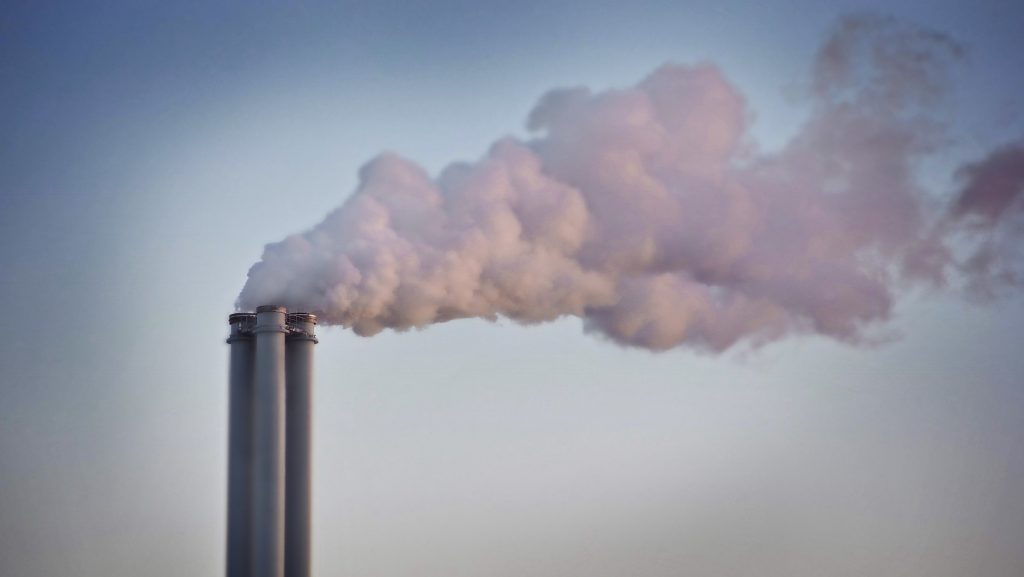
This is the proprietary technology of a single company, though similar purifiers are currently in development by others. TSS heats the air in a chamber to 200°C to literally sterilize it. According to the company, this eliminates multiple kinds of contaminants.
Advantages: TSS doesn’t use fans but lets air pass through it via convection; this keeps it quiet and keeps the power draw low. We also assume this slows down the speed at which air passes through it, allowing bacteria, viruses, and mold to be exposed for longer.
Disadvantages: Please note that as only one other company uses this technology, data on the method is limited. We can’t see how this method would remove particulates (such as allergens and tobacco smoke) as the company claims. It seems to us that burning up particulates might create smaller particulates, which are even more dangerous than larger ones. However, we are open to seeing studies that show otherwise.
Even if we are wrong about the particulates, TSS is still a passive method, albeit a particularly fiery one.
Overall rating: Insufficient data for a meaningful answer.
Types of Proactive Purifiers
Proactive purifiers go head-to-head with contaminants on their home turf. Unlike passive purifiers, which require air to pass through their mechanism, proactive purifiers aim to treat the air before people breathe in contaminants. For this reason, we believe some proactive purifiers are superior to most passive purifiers. Proactive purifiers fall into 5 general categories.
Ultraviolet Light (Proactive Methods)
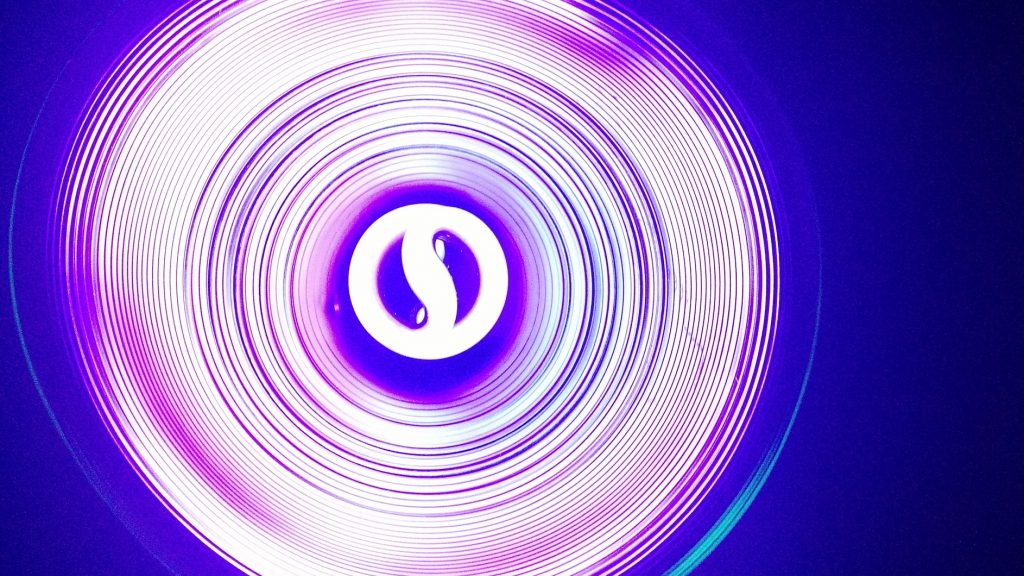
We spoke about passive UV methods in the previous section. The proactive method of UV purification is called whole room UV — an entire (unoccupied room) is exposed to UV light. This method is most frequently seen in hospitals.
Advantages: Proactive UV exposes pathogens long enough to be neutralized, unlike passive UV.
Disadvantages: Whole room UV cannot treat pathogens in shadows or on soiled surfaces. It also cannot be used in occupied rooms, allowing for surfaces and air to be reinfected. It also has many of the same safety issues as passive UV.
A Variation on This Method:
- Far-UVC is a type of purifier that uses a section of the electromagnetic spectrum with such a short wavelength that it theoretically can’t penetrate living human cells (only the outermost layer of dead skin). This would allow far-UV to treat a room proactively while said room is currently occupied. Such technology shows promise, but recent studies have produced some curious red flags.
Overall rating: Too questionable to justify its use over other methods.
Intentional Ozone Generation

We mentioned that some of the technologies above could generate ozone as an unintentional byproduct. Well, this method uses UV or electrical discharge to intentionally generate ozone in unoccupied rooms.
Most oxygen is O2, meaning 2 oxygen molecules bonded together. Ozone’s chemical formula is O3, and it is very unstable. It desperately wants to slough off its extra oxygen atom onto something else and go back to being O2 again. When ozone gives its extra oxygen molecule away to another molecule, that molecule oxidizes, changing its chemical composition.
Ozone is most commonly used in buildings that have experienced fire, smoke, or flood damage.
Advantages: Ozone is good at binding to odor molecules, and thus at eliminating the odors. It also can neutralize bacteria, mold, and viruses, including the virus that causes COVID-19.
Disadvantages: Ozone can kill houseplants; it also irritates the lungs of pets and humans. Ozone may cause more serious problems such as low birth weight or damage to the nervous system. For this reason, ozone generation cannot be used in occupied rooms and thus cannot provide ongoing protection.
It is also difficult for consumers to manage the exact amount of ozone their device generates. Plus, ozone does nothing to eliminate particulates.
Overall rating: We recommend leaving this method to trained professionals.
Ionization
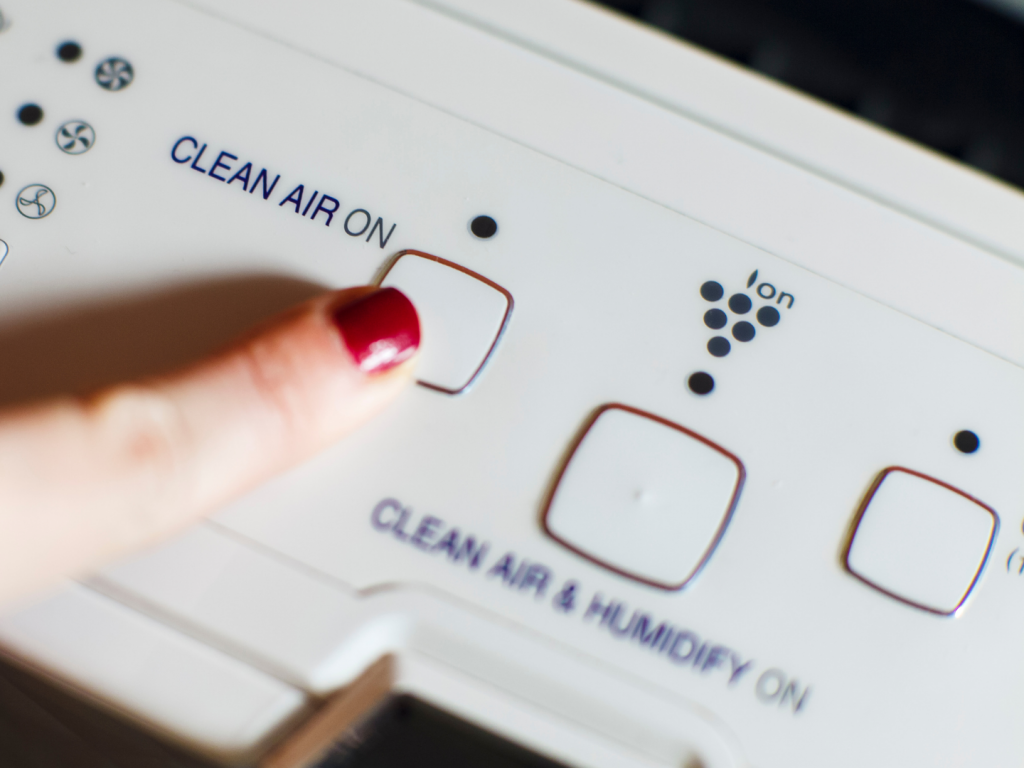
Proactive ionizers use a carbon filter brush or electrode to charge air molecules, generating ions. You’ll notice this is almost identical to the electrostatic precipitators mentioned above. The difference with proactive ionizers is that these ions are sent out into the room (either with the natural air currents or via a fan). These ions cling to particulates in the air, charging them. These charged particulates become attracted to other particulates, clumping together to form larger particulates. These new super-particulates are too massive to remain airborne, and they fall to surfaces in the room. Alternatively, the charged particulates pass near walls or surfaces and cling to them; (once again, the way a balloon interacts with a sweater).
Advantages: The main advantage of ionization is that it is proactive. It treats the air in the room, rather than waiting for the air to come to the purifier. It works on allergens and particulates, and even has some ability to react to pathogens. Fanless ionizers also have the advantage of being quiet.
Disadvantages: The main disadvantage of ionization is that it does nothing for surfaces; in fact, it makes surfaces worse since surfaces become the reservoir onto which ionizers deposit contaminants. These contaminants can be stirred back into the air easily. Ionization also does nothing to cleanse the air of VOC gases. Some ionizers may produce ozone as an unintentional byproduct.
One final note: when particulates are charged, they’ll stick to anything, which may include your lungs. In fact, ionized particulates may stick to the lungs at a much higher rate than non-ionized particulates, which rather defeats the purpose of an air purifier.
A Variation on This Method:
- Instead of generating ions that are only one type of charge, bipolar ionization (often called needlepoint bipolar ionization) uses ultrathin electrodes to produce both negatively and positively charged particles. Needlepoint bipolar ionizers, however, need regular cleaning due to the fact that the ultrafine electrodes burn the carbon brush in their mechanism. (Some do have wipers that automatically unclog the electrodes.) As always, exposed electrodes have the chance to produce ozone.
Overall rating: Traditional ionizers have more disadvantages and risks than advantages. Bipolar ionizers are interesting, but not as cool as ActivePure.
Photocatalytic Oxidation (PCO)

When the sun hits the earth’s atmosphere, it forms what are known as reactive oxygen species (ROS). These are exactly what they sound like — unstable, oxygen-based molecules that easily react with other molecules. These include the hydroxyl ion, the hydroxyl radical, hydrogen peroxide, and superoxide.
To illustrate how PCO works, let’s use the hydroxyl radical as an example. Hydroxyl radicals form when sunlight knocks away one of water’s hydrogen atoms, leaving a reactive molecule with the formula HO•. Hydroxyl desperately wants to stabilize itself by grabbing another atom. It can grab its own atom back again, it can grab another hydroxyl to form hydrogen peroxide, or it can grab carbon or hydrogen from contaminants in the air. This latter reaction is the one we are interested in. Hydroxyl pulls apart methane, benzene, and other carbon-based gases. They also grab atoms from the outer shells of viruses, bacteria, and fungi, rendering them inert.
PCO is an early version of technology which was designed to mimic this outdoor process indoors. A shielded UV bulb shines on a catalyst (usually titanium dioxide), generating ROSs. These molecules are sent through the room by a fan (or allowed to diffuse through the room via natural air currents), deactivating viruses, bacteria, mold, and VOC gases.
Advantages: PCO is fairly successful at neutralizing viruses, bacteria, mold spores, and VOC gases. As it is a proactive technology, this purification occurs throughout the room, rather than just inside the purifier.
Disadvantages: Early PCO tends to produce undesirable byproducts such as ozone (from the UV bulb) or formaldehyde (possibly from the incomplete breakdown of VOC gases or methane). PCO does nothing against dust, allergens, or particulates. UV bulbs also need to be occasionally changed, and the catalyst has a finite lifespan.
3 Variations on This Method:
- One very interesting and energy-efficient idea for room purification uses certain types of titanium dioxide paint. Hydroxyls then form when sunlight hits the paint. However, this can produce the same undesirable byproducts as traditional PCO.
- A second variation of PCO involves using a different catalyst to generate hydrogen peroxide only rather than multiple ROSs. This technique is called dry hydrogen peroxide.
- One of our competitors uses something called Photo Electrochemical Oxidation (PECO), which confines the reactive oxygen species to a treatment chamber rather than sending them throughout the room. This reduces the proactive method of PCO to a passive method, negating many of PCO's advantages.
Overall rating: PCO is old news. Advanced Photocatalysis is where it's at.
Advanced Photocatalysis

At last, we come to it — the grand finale! Advanced photocatalysis (a.k.a. ActivePure Technology) works similarly to PCO but without the disadvantages. ActivePure’s proprietary honeycomb catalyst shape and formulation prevent the production of formaldehyde or other undesirable VOC gases. By pairing the correct UV wavelength with the correct bulb coating, it deftly dances around unacceptable ozone. Thus, advanced photocatalysis is the 21st century’s answer to the previously untapped potential of PCO.
Advantages: Advanced photocatalysis targets bacteria, viruses, and mold spores on both air and surfaces. Under laboratory conditions, our Pure & Clean unit with ActivePure Technology reduced 99.9% of the airborne virus that causes COVID-19 in under one minute. Our field results are even more interesting. For example, a longitudinal study of a busy ICU demonstrated a 98% reduction in MRSA surface burden and the complete elimination of hospital-onset MRSA infection.
To quote the late, great Billy Mays, “But wait, there’s more!” Our Class II Medical Device, the ActivePure Medical Guardian, is proven to reduce the following by 99.9% in 30 minutes or fewer:
- MS2 bacteriophage RNA virus, which is a non-enveloped virus and thus much harder to inactivate than SARS-CoV-2.
- PHI-X174 bacteriophage DNA virus, a surrogate for Hepatitis C and HIV.
- Staphylococcus epidermidis gram-positive bacteria, surrogate for Methicillin-Resistant
- Staphylococcus Aureus (MRSA), a major cause of hospital-acquired infections.
- Erwinia herbicola gram-negative bacteria, a surrogate for the bacteria that causes bubonic plague.
- Aspergillus niger fungal mold, the cause of Aspergillosis.
- Bacillus globigii bacterial endospore, which is generally considered among the most difficult pathogens to neutralize. ActivePure Technology reduced concentrations by 99.98% in 30 minutes.
ActivePure also has initial testing data demonstrating a reduction in TVOCs.
Disadvantages: Admittedly, advanced photocatalysis doesn’t specifically target particulates or pet dander. However, HEPA plus Advanced Photocatalysis is a truly unbeatable combination, covering all the bases with almost none of the disadvantages. For this reason, we pair many of our proactive machines with HEPA filters.
About once per year, ActivePure cells do need to be replaced. Considering the peace of mind provided by our data though, this is more of a molehill than a mountain.
Overall rating: We’ll let the data speak for itself.
Some Final Words

When it comes to pathogens, passive purifiers alone just can’t cut it. Advanced photocatalysis allows for 24/7 protection of the air we all breathe, making it the champion we need in a post-pandemic world.
That doesn’t mean passive technology doesn’t have its uses though. We recommend all consumers educate themselves on the contaminants and pathogens they are most concerned with and then apply the best technology (or combination of technologies) to address those concerns.
We hope this summary of purification technology was informative and engaging. We also hope it will assist you in choosing the best purifier for your home or business. Once you’ve made a decision, contact your local ActivePure reseller. You may also contact us directly and our team will help connect you.

